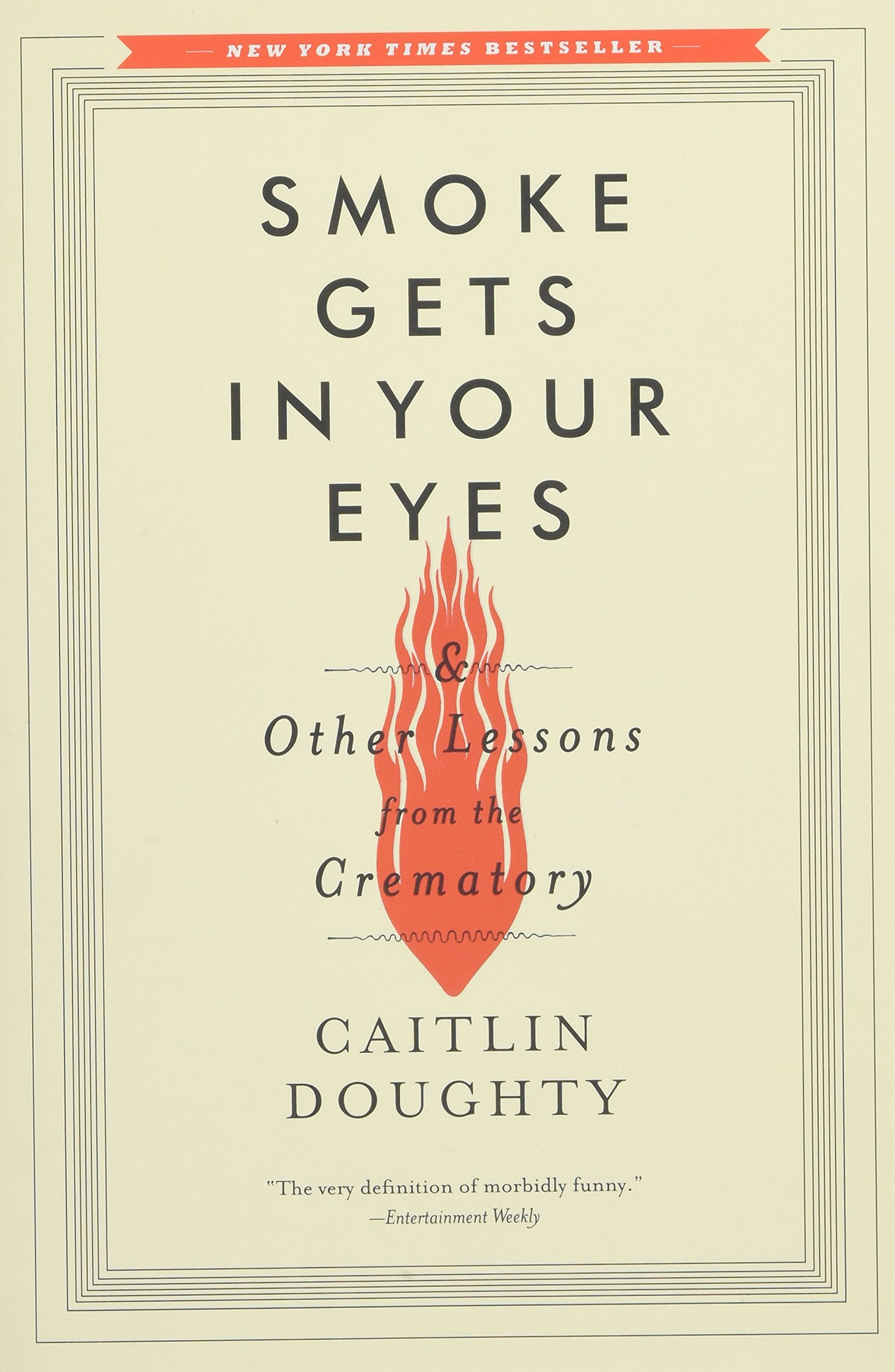Right then. Welcome back.
Yesterday, I met a first-semester MLS student who moved to Bloomington four weeks ago. I told him I had him beat: I arrived here two weeks ago today, a mere four days before classes began. In terms of chaotic life decisions, I would say this life-haul bonanza registered quite low, especially compared to moving to London the day after I was diagnosed with Lyme disease.
After a combined 13 hours in the car—six of which were in the tornado-watch hills of Pennsylvania and five of which were in Ohio, where we blessedly passed the “Hell is Real” sign—my father and I arrived in a swelteringly hot Bloomington, Indiana. We fully wung it (winged it?) at Bed, Bath, & Beyond to middling success, I ordered a bunch of recycled rugs online, and I am now writing to you all from my new basement apartment, where my cricket roommate Synthia (short for photosynthesis) serenades me when I turn out the lights in the evening. Less Dispatch from the Sunroom, more Dispatch from the Asphalt Terrace. I worked hard on this logo, though, so I’m keeping the title.
It is strange to be back on a college campus after two years and an unconcluded pandemic, and even more so to be at a Big College Campus, where it takes significant time to walk from one building to another. As an undergrad, I found myself bewildered by graduate students who seemingly had no clue what was happening, or where things were, or what people did. I now completely understand. The world of my life at IU is so miniscule within the ecosystem of undergraduates, and it’s fascinating to watch that from the other side.
My life on campus comprises four buildings—five, if we count the gym. And 82% of my time (really, I did the math) is spent in just one: the Lilly Library. Newly open after a two-year renovation (could my timing have gotten any luckier?), I attend class five hours a week and work as a desk attendant for another 13 in one of the Midwest’s most robust special collections libraries.
The Lilly Library is a massive part of why I chose to attend IU instead of one of the library programs on the East Coast: the IU MLS program has one of the few remaining specializations in Rare Books and Manuscripts Librarianship in the county, largely due to the courses taught by many of the Lilly’s staff. You may recall that I took Reference Sources for Rare Books in the spring and Rare Book Curatorship over the summer, both of which were taught by Lilly librarians. This term, I’m taking two more courses with those same two faculty members: Descriptive Bibliography and Rare Book Librarianship (there’s a difference, despite the course title. All in good time).
Not every library program features proximity to a special collections library like the Lilly, and returning to a library environment after over two years helps me focus on what parts of the library I haven’t worked in quite yet. When I was at the John Hay Library, I spent most of my time researching and inventorying; between the bookdealers, I catalogued and scouted. But I don’t know a lot about digitization, conservation, or reference. Thus forms my checklist: in this next year on campus, how can I stick myself in as many corners of the library as possible?
In addition to Descriptive Bibliography and Rare Book Librarianship, I’m taking two other courses this term: Representation & Organization and Digital Libraries. The latter of these will help me check off digitization basics, as our final project involves digitizing a set of materials, encoding them for searchability and findability, and developing a digital library website. Learning the bare bones of digitization is worthwhile despite the undue frustration I will inevitably suffer, though to no fault of the course itself.
Let me set the scene for you: despite being the daughter of two computer scientists, I basically use my junky little laptop as a word processor and search engine. I don’t know where most of my photos are stored, but I do know that they should be on an external hardrive, because this device is a ticking time-bomb. My dinky personal computer is a grand four years old and it is over it—in February, it started fitzing like TV receiving poor service through its antenna; the battery life dropped precipitously in March, and in May, it wouldn’t turn on without being plugged in (it now automatically shuts off if I unplug it). Since I signed up for that computer science class, it’s started crashing four times per day: when I turn it on, if I open more than one tab in Chrome, and then twice at random to keep me on my toes.

So taking a computer-based class when the single most important piece of equipment for that class is teetering over the cliffside with self-satisfied delight probably wasn’t my most inspired idea. But the course itself examines more than just making material things into digital things, it also asks us how we describe those things and to what end those descriptions may be used to query, format, and process information.
If Spring semester was about reference, Fall is about description: textual and encoded, broad and detailed, legible and illegible. One follows the other, in a way, as you can’t really find things effectively unless they are described and searchable. It’s all metadata.
Descriptive Bibliography, traditionally concerned with describing the physical makeup of a book, is not all that different from digital encoding. Though it uses a different vocabulary of symbols than coding languages, bibliographic descriptions attempt to convey to a reader what a book looks like and what it contains without requiring the reader to actually hold the book in their hands. Bibliographers spend gads of time comparing copies of the same book to arrive at these formulas, which are in turn used as a point of comparison by book dealers and cataloguers to see if their copy matches up to the aggregate, or ideal, copy. Effectively describing a book requires understanding how books are made—what their format is, what typeface was used, where the binding is from—and that highly specialized knowledge comes with years of handling thousands of books. And the resulting descriptions are influenced, to some degree, by how detailed a bibliographer wants to be.
Bibliographic description is a subset of Representation & Organization (also known as Knowledge Organization), which is more broadly concerned with how librarians, cataloguers, archivists, and org systems designers define things in relation to other things. How do we classify stuff so that the groups they’re in have meaning? How do we make sure they have meaning to other people? To what degree, or rather, on what scale do we describe things? Is this a book, is it a book about being a mortician, is it a book about being a mortician that has nineteen chapters, and these are the chapter titles, and these are short descriptions of each chapter? Who is doing all this describing, and how much time do they have, and what is their life experience that may make them refer to the building the mortician works in as a “mortuary” versus a “funeral home”? And, by the way, how much are they getting paid to do all this?
That’s a benign example. My professor for Rep & Org is equally interested in the process of knowledge organization as she is in the function of knowledge organization—how is classification an exercise of power? Categories are invisible but material. They have real consequences on our lives. What happens, for example, when we attempt to categorize who is a person?
housekeeping and birdseeking
house
I encourage you to donate to funds and organizations providing abortion and reproductive healthcare access to Texans. I am supporting Indigenous Women Rising, an abortion fund for Indigenous women in the US and Canada. Texas is now moving to make it easier for the state to take Indigenous children away from their parents, another step to destabilize the lives of one of the most vulnerable populations in the state.
What I’m currently reading: Smoke Gets in Your Eyes: And Other Lessons from the Crematory, a memoir by Caitlin Doughty about her first six years working in a crematory. I’ve been meaning to read this book since I listened to Doughty on my favorite podcast, Call Your Girlfriend, where she talked about Americans’ fear of death and what she does as a mortician to ease that.
What I read these past two weeks: Conversations with Friends by Sally Rooney (her debut, not as strong as Normal People); Beach Read by Emily Henry (the same author as the previous romance novel I read. This one was also great); and The Hidden Palace (Helene Wecker’s sequel to The Golem and the Jinni. A different, but still beautifully-written story).
bird
The birds have been replaced by the beeping of early-morning delivery trucks, as I live underneath and between three different restaurants. Currently my white noise machine is set to “rainfall.”
More later.





